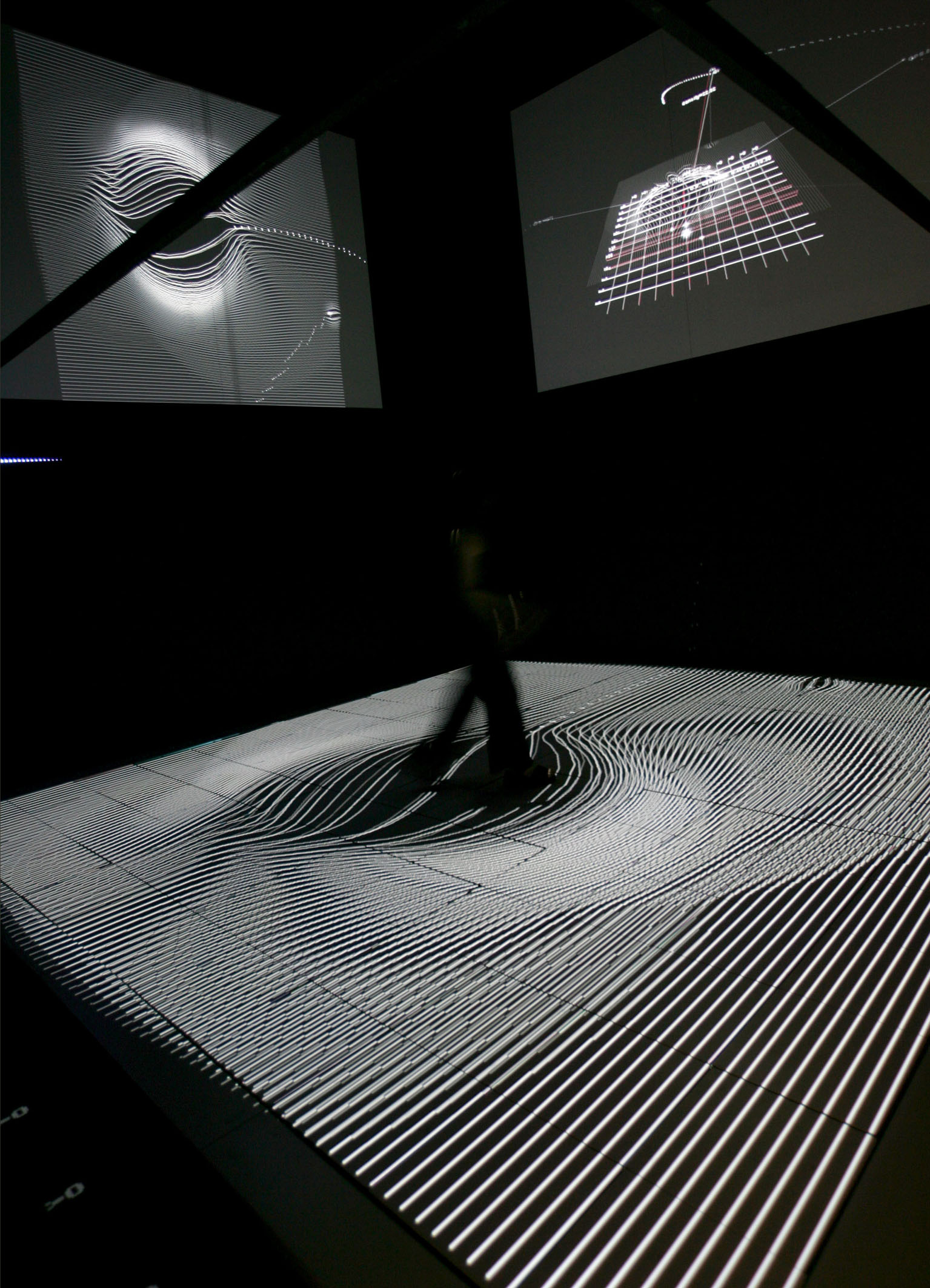Autopoiesis
Autopoiesis ist eine Roboter-Skulptur-Installation, die vom Kiasma-Museum in Helsinki, Finnland, im Rahmen von Outoaly, der von Erkki Huhtamo 2000 kuratierten Alien Intelligence Exhibition, in Auftrag gegeben wurde. Sie besteht aus fünfzehn Roboter-Klangskulpturen, die mit der Öffentlichkeit interagieren und ihr Verhalten im Laufe der Zeit ändern . Diese Verhaltensweisen ändern sich aufgrund des Feedbacks von Infrarotsensoren, der Anwesenheit des Teilnehmers / Zuschauers in der Ausstellung und der Kommunikation zwischen den einzelnen Skulpturen. Diese Serie von Roboterskulpturen spricht über ein Computernetzwerk und hörbare Telefontöne miteinander, die eine musikalische Sprache für die Gruppe sind. Die Autopoese ist „selbstgemacht“, ein Merkmal aller lebenden Systeme, das von Francisco Varella und Humberto Maturana definiert und verfeinert wurde. Die Interaktivität bindet den Betrachter / Teilnehmer ein, der wiederum die Entwicklung und Entstehung des Systems beeinflusst. Dies schafft eine Systementwicklung sowie eine Gesamtgruppe skulpturaler Ästhetik. Autopoiesis bricht von Standardschnittstellen (Maus) und Wiedergabemethoden (CRT) ab und bietet eine interaktive Umgebung, die umfassend, detailliert und in Echtzeit entwickelt werden kann, indem Feedback und Interaktion von Zuschauern / Teilnehmern genutzt werden.



